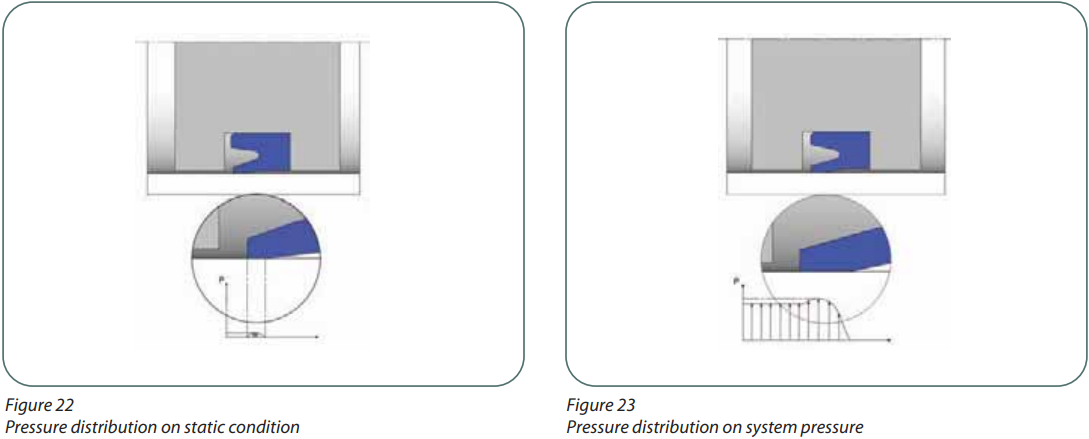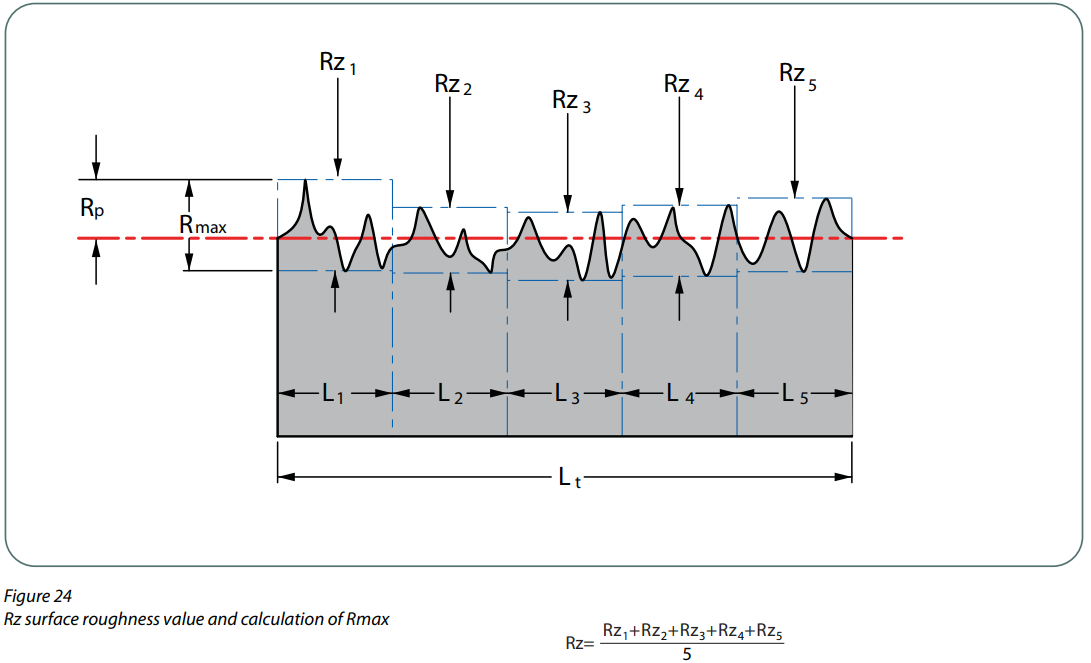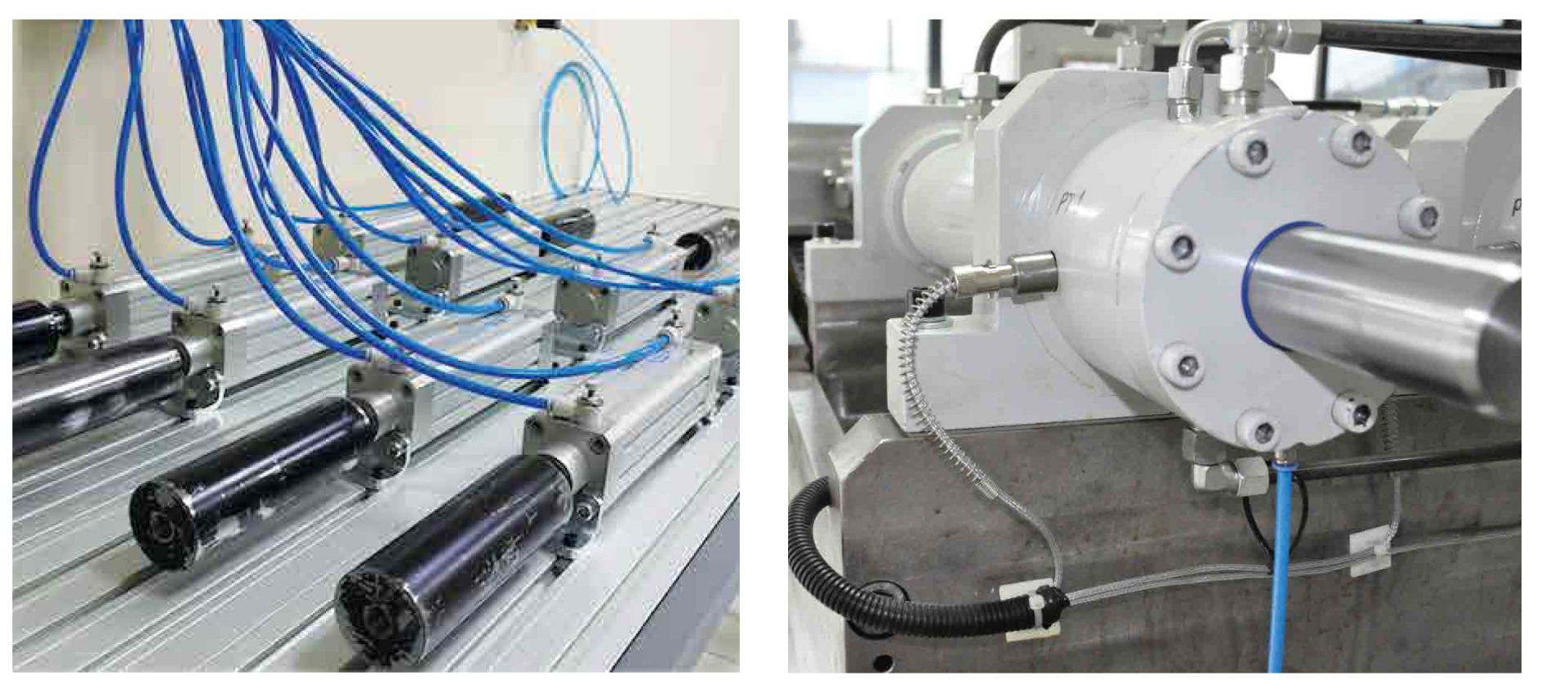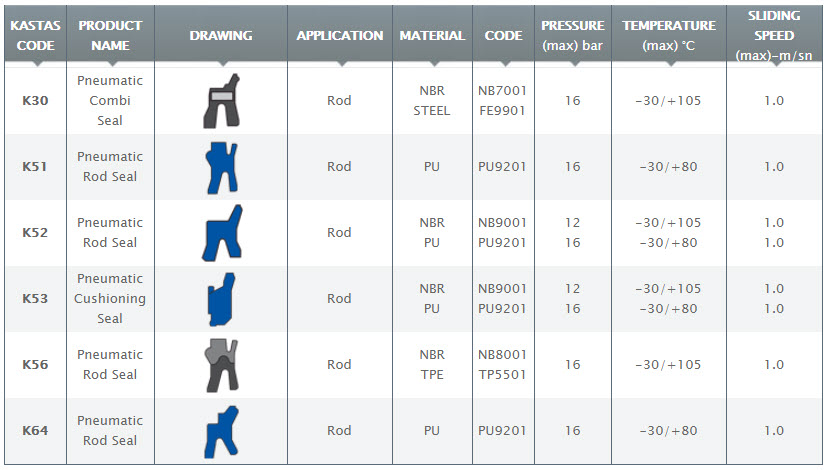PNEUMATIC SEAL ซีลระบบลมอัด
PNEUMATIC SEALING ELEMENT

Working Principle of Sealing Elements
Sealing elements are designed for the pressurized gas not to pass to the un-pressurized side in pneumatic systems. Pneumatic cylinders are widely used in mechanical applications that require low forces with high reciprocating sliding speeds. Sealing elements are one of the most important parts of these cylinders. The sealing elements are being installed into the respective groove with a preload. Figure 22 shows the sealing element, preloaded after the assembly of the seal and the free space needed in the housing. The sealing element is able to work in low pressures due to this preload. Figure 23 shows the pressurized air filling into the groove and sealing element is expanded with this pressure.

Sealing elements are produced from such materials that can change their form when force is applied (Figure 23) and can return to the original form when this force disappears (Figure 22). In this respect sealing elements are produced from elastomers, thermoplastics or thermoplastic elastomers. Sealing elements do have more than one duty in pneumatic cylinder due to the limited space and the cost. That’s why most of the rod seals work both as a wiper and a rod seal. In piston sealing elements, the designs are used to avoid the necessity of having a piston itself
CHOOSING SEALING ELEMENTS
System pressure, sliding speed, temperature, media, surface roughness and system tolerances are the important parameters when choosing the type of the pneumatic sealing element.
PRESSURE
The pressure does not go beyond 16 bar (special applications only) in pneumatic systems. That is why the pressure source (air compressors, etc) settings are between 3 to 8 bar. The expectation from the pneumatic sealing element is to function properly with no interruption in low pressures.
SPEED
Pneumatic systems increasingly being used in automation processes and requires high sliding speed. The speeds (0.5 m/sec and higher) are generally higher than the hydraulic applications and these are named medium speeds in pneumatics. The negative effects of the friction forces cause by high sliding speed should be taken into consideration when choosing the material and profile to have the optimum sealing in the system.
TEMPERATURE
Operating temperature and local temperature increase due to the friction forces should be taken into consideration when choosing the sealing elements in pneumatic systems. For high temperature applications sealing elements can be used from PTFE and FKM.
AIR
Generally, the compressed air contains dust, dirt and moisture if no prior operation is applied on it. Life span of the sealing element shortens under this operating condition. That is why filters should be used in order to purify the air from the compressor oil and to clean the air. Maximum cleanliness is essential before greasing and commissioning; the system must be completely free from machining residue, old lubricants and any other contaminations. Prepared compressed air should be used as dried or conditioned with special lubricants. Special assembly grease should be used for the sealing elements that will be working in non oiled systems in order to have optimum friction forces.
SURFACE ROUGHNESS
The maximum surface roughness value, Rmax, is the most important factor that affects the life span of the sealing elements in pneumatic systems. Surface roughness values should be according to the catalogue information provided in the each product group. Rz value that we indicate in our catalogue is the average of the 5 consecutive maximumum roughness values in specific length of surface, Rmax is the maximum of these values and Rp is the height of the surface roughness (Figure 24).

We recommend Rmax value not to be higher than the value given in our catalogue and Rp/Rz ratio to be less than 0.5. Surface contact area Rmr ratio is also an important factor in the surface roughness.
SYSTEM TOLERANCES AND DESIGNS
System tolerances are important factors on the life span of the sealing elements. Inappropriate dimensions, tolerances and not centered pneumatic cylinders make the sealing elements wear out in short period of time and the system does not give the required performance. All the dimensions and tolerances are indicated on the product pages in our catalogue. Table 3 shows the general tolerances used in the pneumatic systems.
The cylinder bore in pneumatic cylinders are manufactured from steel, soft metals such as aluminium and special engineering plastics. Sliding surfaces should have the following mentioned operations (honed, grinded, etc) in order to obtain the required surface roughness values. Rods are produced from chrome plated steel (55 HRC) and should be grinded, polished. Other cylinder components are produced from steel, aluminium and special engineering plastics.

Pneumatic Rod Sealing Elements


Pneumatic Piston Sealing Elements


สอบถามสั่งซื้อสินค้า
บริษัท อีโคซีล จำกัด
Facebook : @ecosealthailand
Line Official : @ecosealthailand
Website: www.ecosealthailand.com
E-mail : ecoseal@ecosealthailand.com
Tel : 02 931 6868

